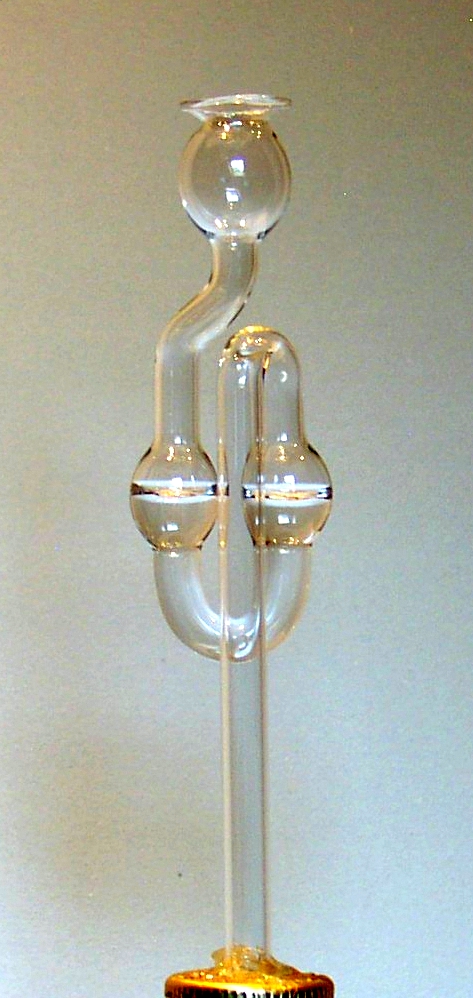During the fermentation process, glucose is converted into ethanol and carbon dioxide. Since carbon dioxide escapes from the fermentation bucket, the relation between the initial and final weights is given by:
\[ W_i - W_f = W_{CO_2} \]
We know that ethanol and carbon dioxide are always produced in the same proportion. This means that there is a fixed ratio among their weights: $W_{CO_2} = k*W_e $ , with $k$ a constant. Thus,
\[ W_i - W_f = k*W_{e} \]
By expressing the weights in terms of volumes and densities $(W=V*\delta)$, we get:
\[ V_i * \delta_i - V_f * \delta_f = k*V_e * \delta_e \]
And here comes the trick... Let us assume that $V_i \approx V_f$. Thus,
\[ V_f *( \delta_i - \delta_f ) \approx k*V_e * \delta_e \Rightarrow \boxed{( \delta_i - \delta_f ) ( k \delta_e )^{-1} \approx \frac{V_e}{ V_f} = ABV} \]
In the following posts, I will show that it is safe to assume that $V_i \approx V_f $, and determine the value of $k \delta_e$.

No comments:
Post a Comment